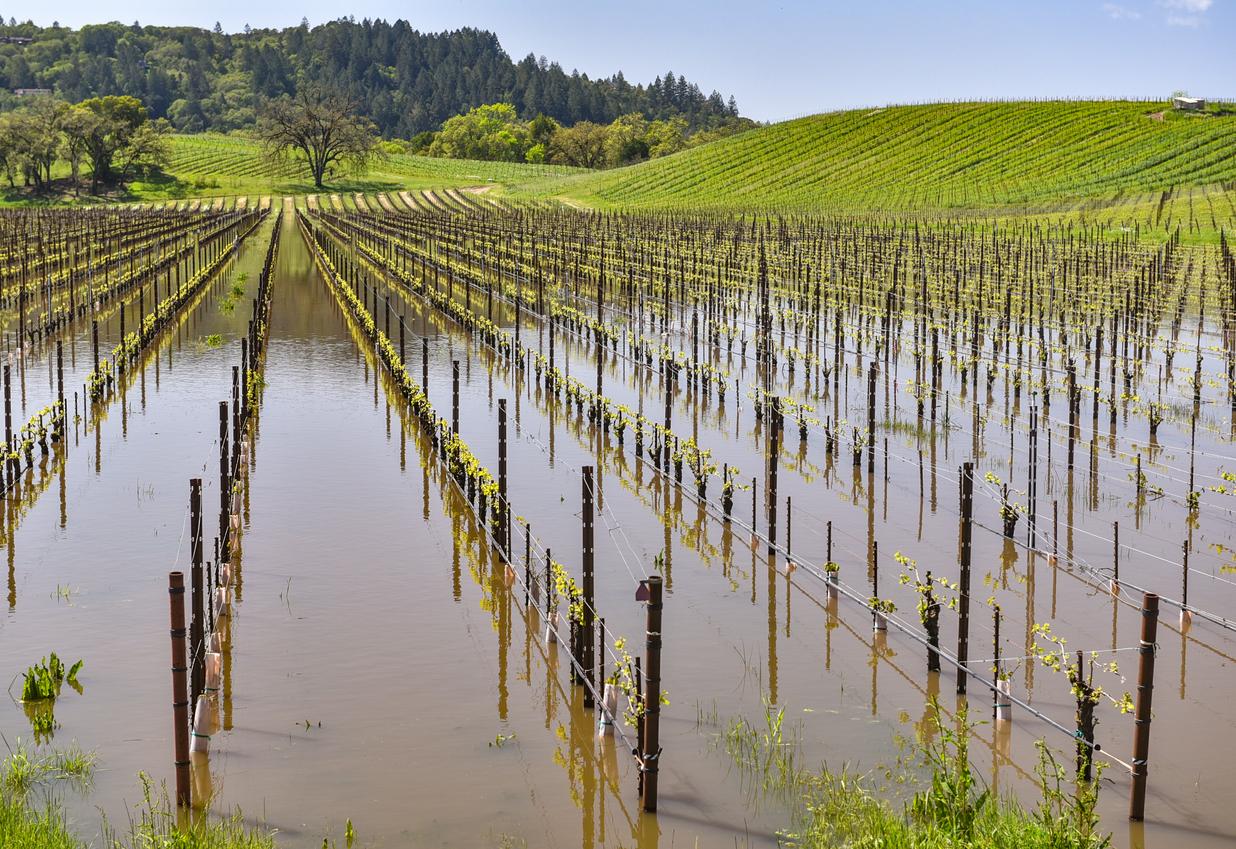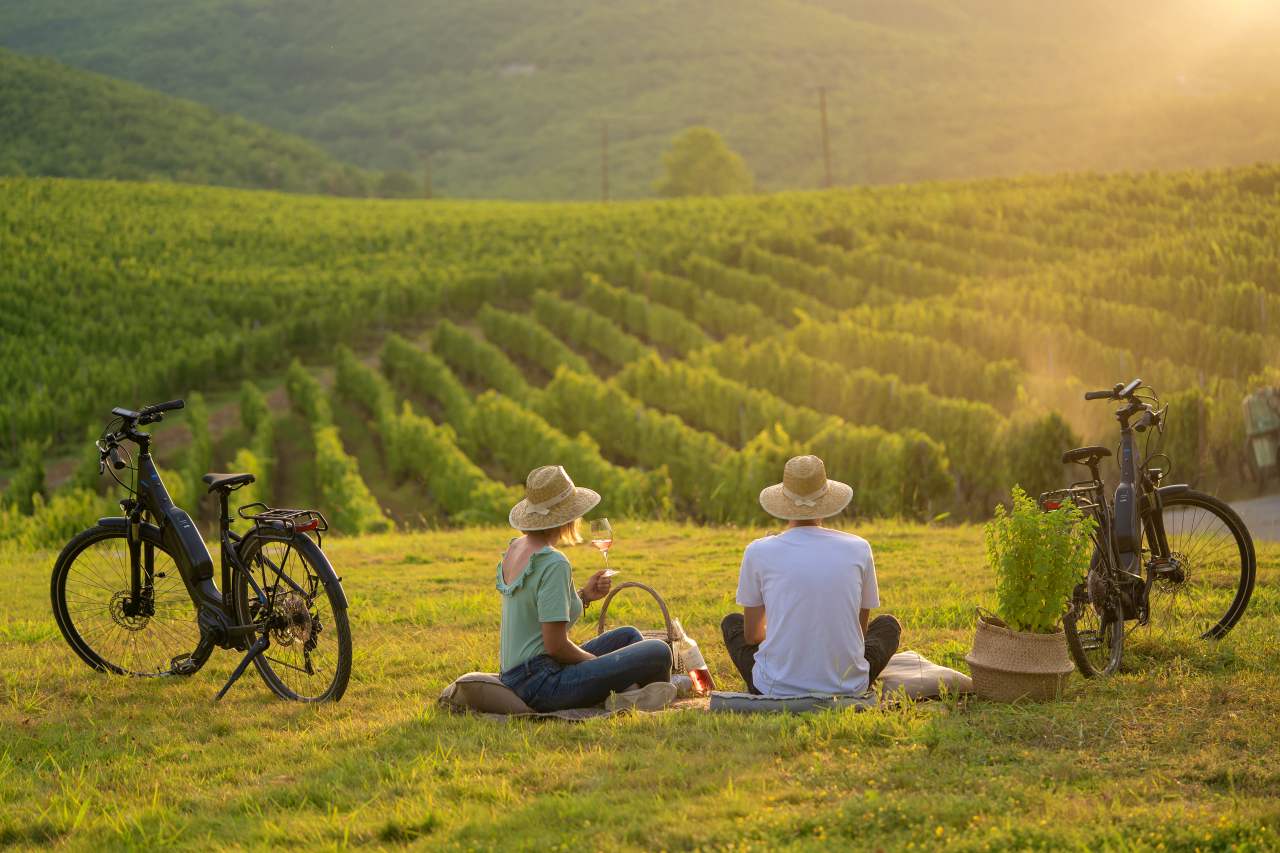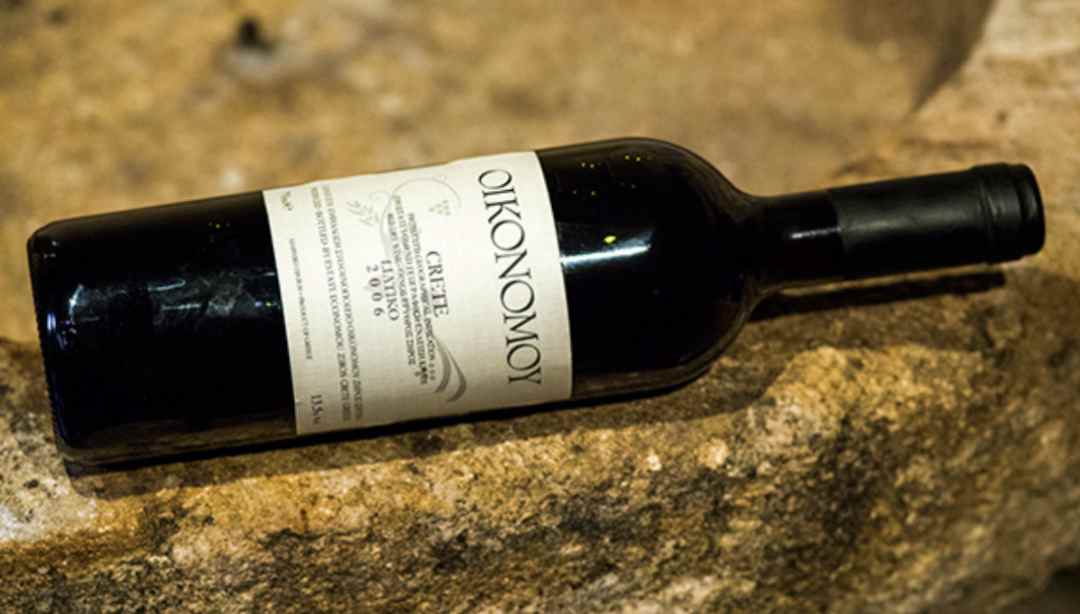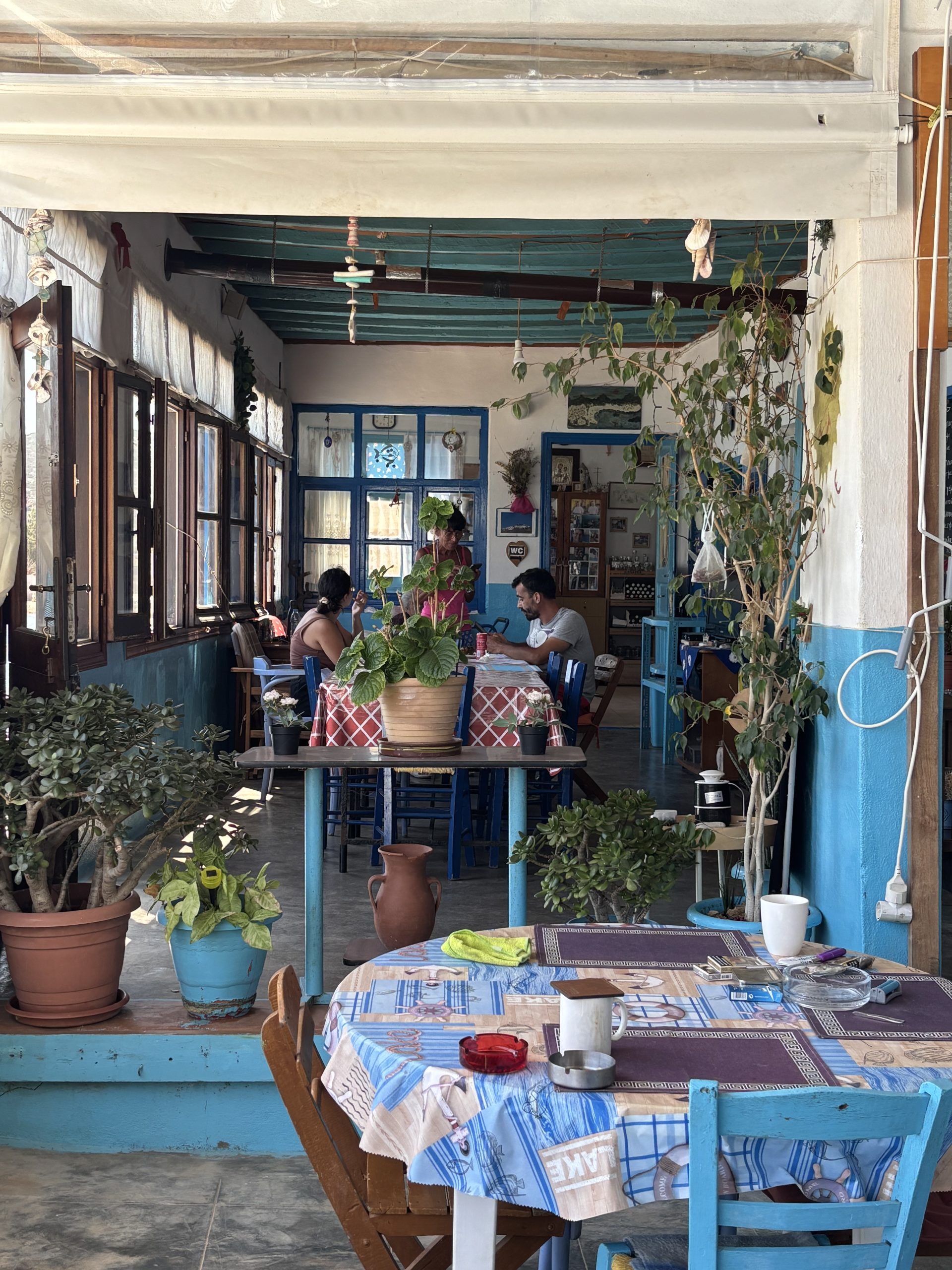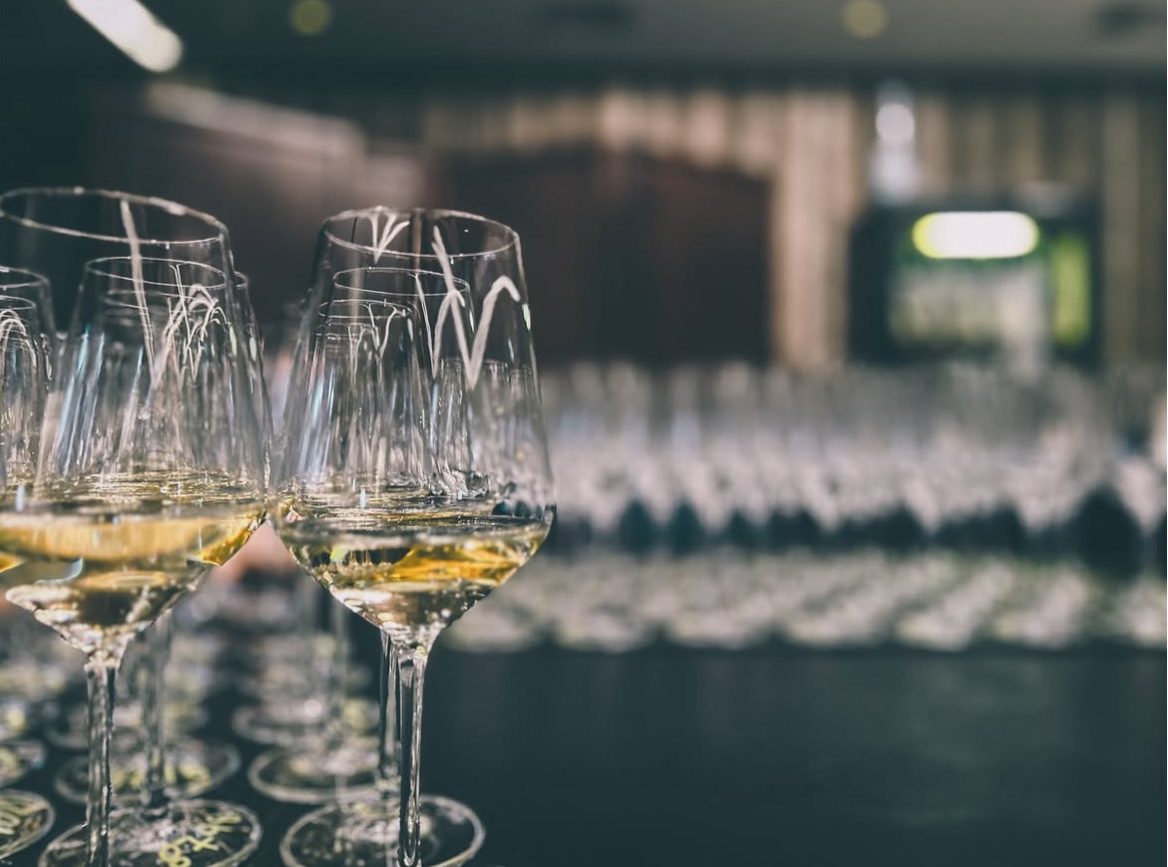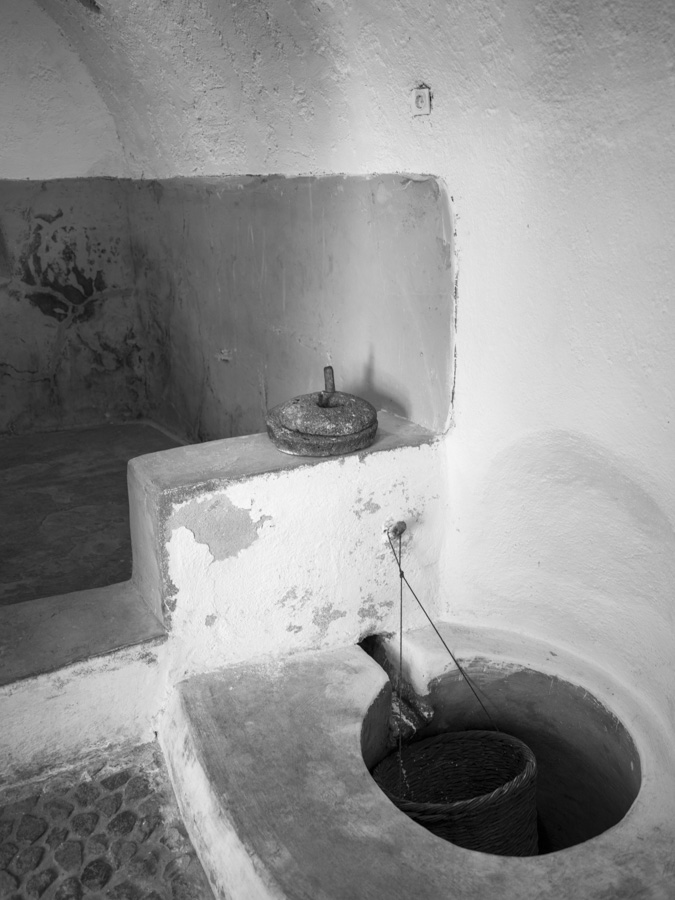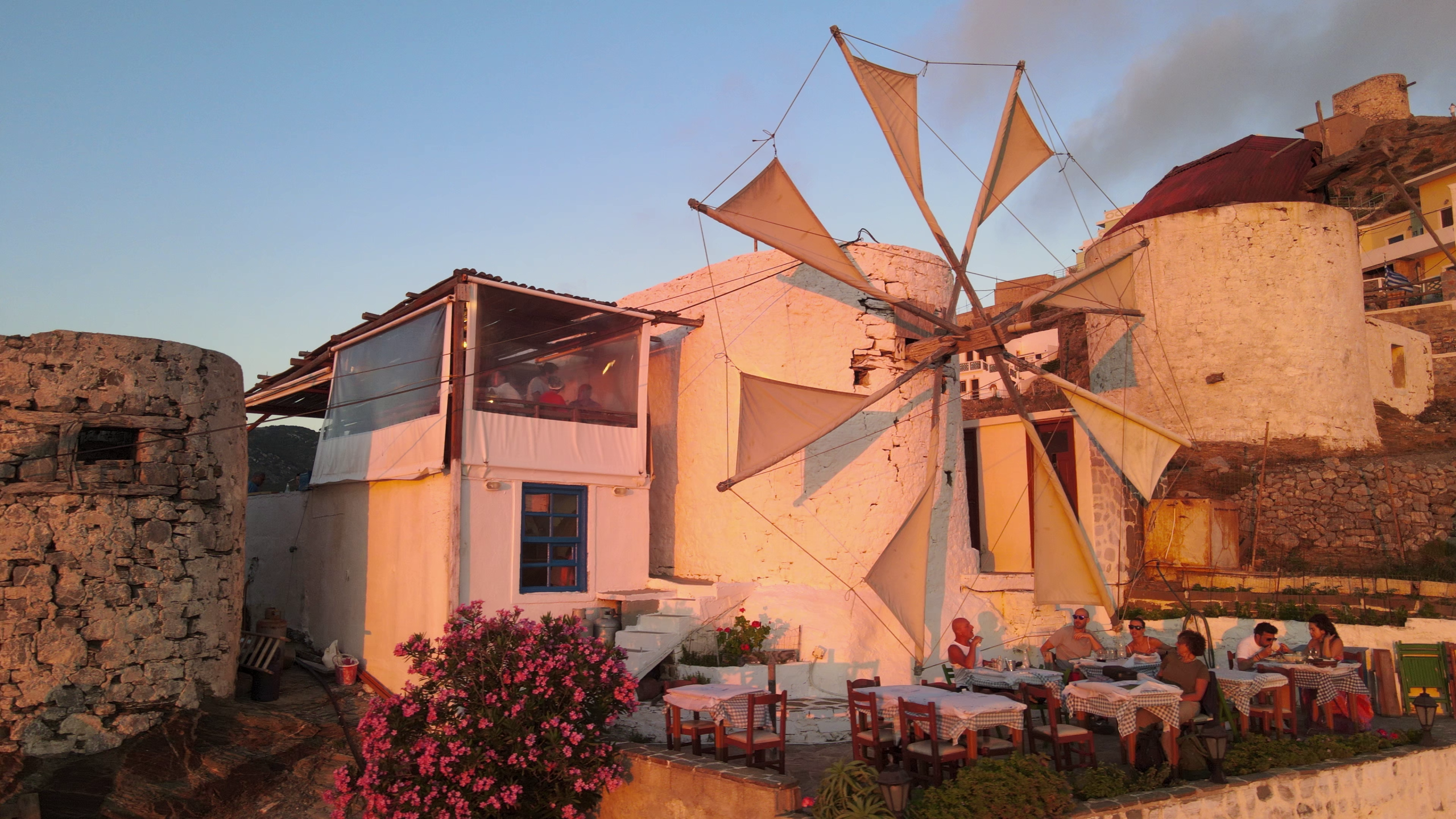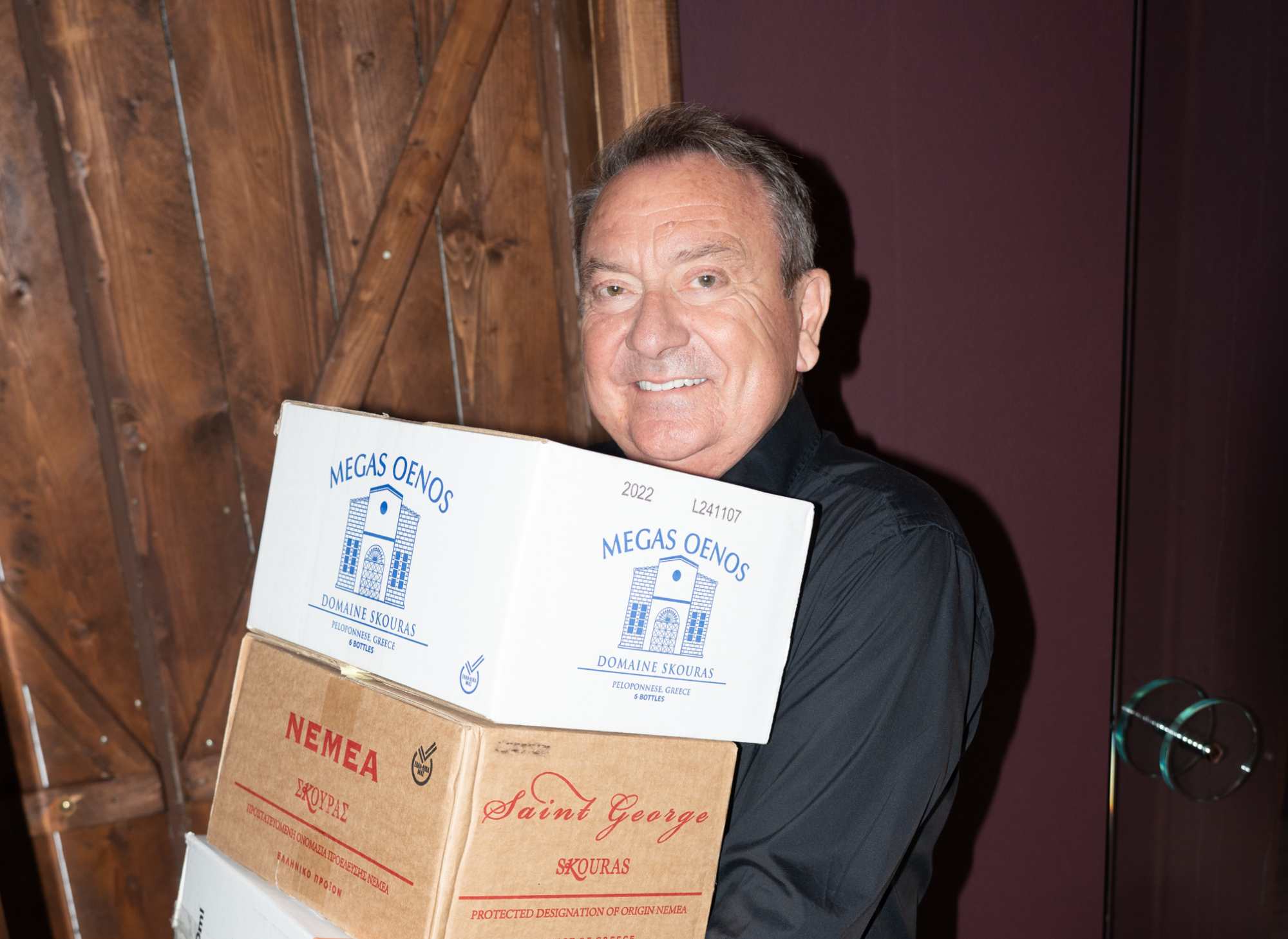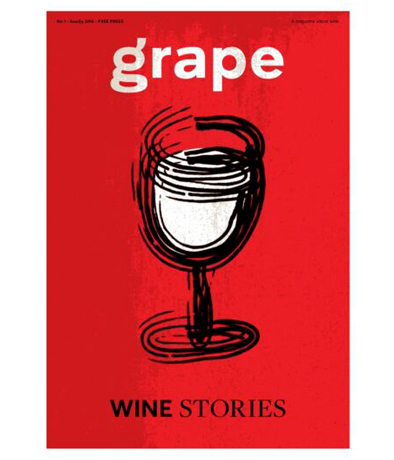According to Greek mythology, the island of Cephalonia, (Kefalonia in Greek) owes its name to Kefalos, who defeated the Televoes and became the island’s first inhabitant. It is said that Kefalos planted a grapevine from mainland Greece, from where he originally came, and this is how the island’s long history in winemaking began.
During Venetian rule, the wine produced on Cephalonia was exported on a regular basis to Europe. A series of earthquakes which hit the island in 1953 caused major destruction and many deaths; many of its inhabitants were forced to leave the island and start a new life elsewhere. Many immigrated to the United States and Australia. Today, Cephalonia is considered one of the most promising winemaking areas in Greece, producing some very interesting wines from indigenous varieties, the most famous of which is Robola, a white variety which produces a dry white wine with high acidity and a mineral character. Most of the island’s vineyards are in the mountainous areas of the central and southern part of the island.
Thanks to the efforts of a dynamic group of winemakers, Cephalonia has the potential to become a great wine tourism destination (it is, in any case, already well-known as a vacation spot for general tourism), granting its visitors the opportunity to taste wines from indigenous varieties found only here. Grape visited five of the six main producers on the island and discovered − apart from beautiful landscapes − different approaches to winemaking, ranging from biodynamic winemaking following a more traditional approach to more technologically innovative modern methods; all of the wineries, however, revealed the amazing potential of these unique indigenous varieties.
MAIN VARIETIES
Robóla: The island’s main white variety. It is a citrus-scented grape that grows in the limestone and gravel soils responsible for its characteristic minerality. It is found in the designated Robola Zone, in the central part of Cephalonia, in vineyards whose elevations range from 350m to 750m.
Mavrodáfni: A red grape variety which used to be vinified exclusively for the production of sweet wines. Today, dry wines that are made from it are full bodied, with aromas of red fruit and licorice.
Tsaoúsi: A white variety which produces wines with sweet citrus aromas.
OTHER VARIETIES: Moscáto, Zakynthinó, and Vostilídi.
CLIMATE AND SOILS
Conditions are generally mild, but heavy rainfalls and high humidity may result in fungal diseases such as mildew and botrytis. Most vineyards are bush trained. The soils are limestone and gravel in the mountainous areas (mainly in the Robola Zone), while in the area around Lixouri, where Mavrodafni grows, soils are mainly clay.
GENTILINI WINERY
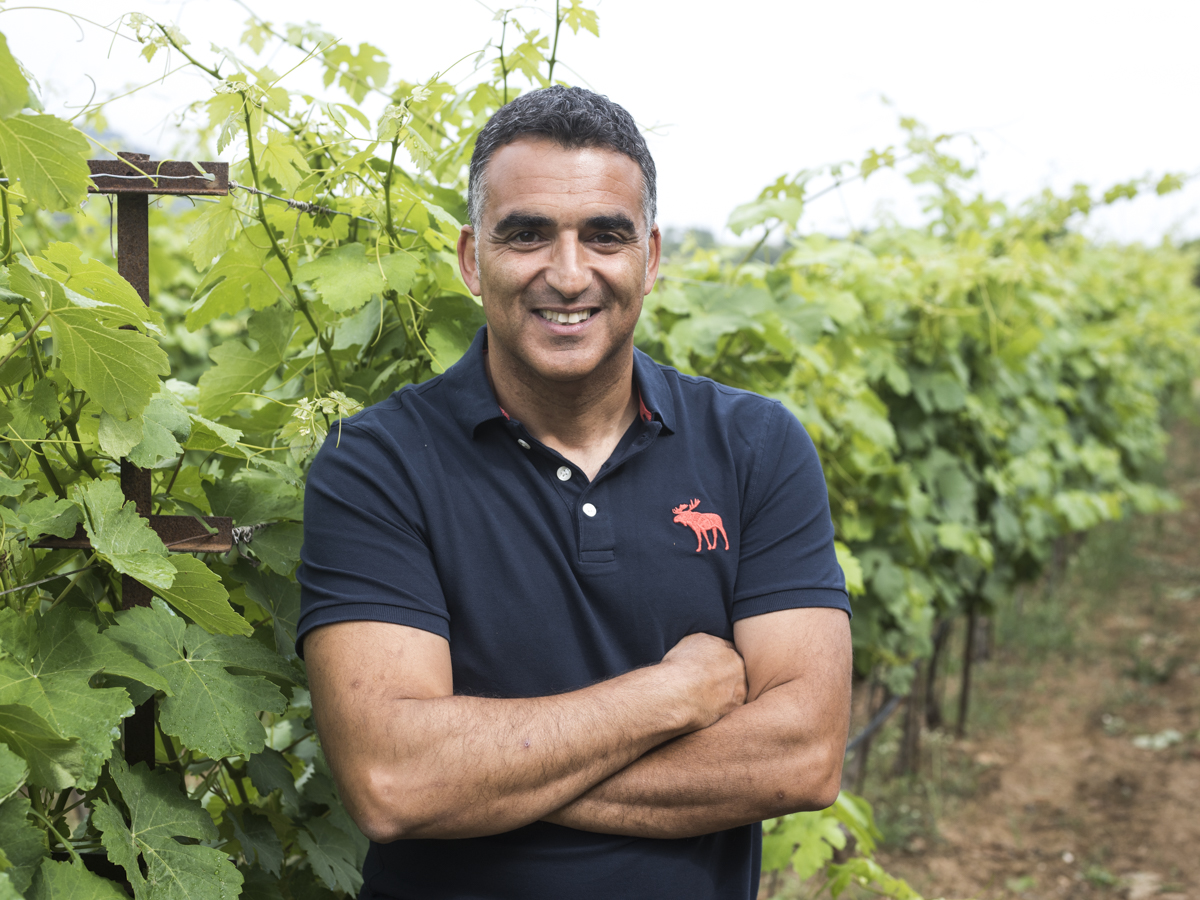
Established in the 1980s by Spiros Kosmetatos, Gentilini Winery is responsible for making Robola famous both in Greece and abroad. The winery owes its name to Kosmetatos’ paternal grandmother Mariana Gentilini, the last noblewoman of her line. (Her ancestor Marino Gentilini, an Italian army engineer, was commissioned by the Venetian Senate in 1593 to build the extensive Assos fortifications on Cephalonia. He eventually married and settled here, and his name was inscribed in the Libro d’Oro of noble families.) In 1929, Gerassimo Cambitzi opened one of England’s first wineries, Isleworth Wineries, a little outside London. Thirty-five years later, his grandson, Spiros Kosmetatos, planted his first vineyard of local and classic white grape varieties on Cephalonia. Having studied the latest techniques to identify the oenological processes best suited to the climate, soil and varieties of the area, Kosmetatos released the first commercial vintage of Gentilini in 1984, simultaneously in Athens and London. At the time, he was a pioneer in fine winemaking in Greece, paving the way for those boutique wineries that followed.
Today, the winery has passed to the next generation. Spiros’ daughter Mariana, and her husband Petros Markantonatos, took over the estate in 2002. A highly energetic man, with a strong vision of how to make Robola − the next signature Greek white wine variety after Assyrtiko − Markantonatos divides his time between Cephalonia and abroad, mainly Australia, where he is co-operating with Paulmara Estates, a winery that is planning to produce Robola wines in the Barossa Valley. Markantonatos came straight from the airport to welcome us to the estate. He’d arrived a day ahead of schedule just to meet us, and he was pleased to take us around the 10-hectare vineyard, planted mainly with Mavrodafni, which is organically farmed. “With the latest additions, this is becoming a very significant Mavrodafni vineyard,” he explained proudly as we walked up towards the family house, which stands atop a hill and enjoys breathtaking views of the seashore.
Back in the open-air tasting area, we noticed a couple of American visitors enjoying their wine, engaged in a lively conversation with Markantonatos’ niece, Nora, who’s responsible for organizing the visits. “We welcome about 4,000 visitors per year, all either by appointment or as walk-ins − no tour groups − and give them a short tour of the estate and production area, as well as tasting flights of Robola and the winery’s other selections,” Markantonatos explained. “This is a small, boutique winery and we’d like to keep it that way. We don’t want to add any more buildings; that would spoil the really beautiful natural surroundings.” Mariana, his wife, is in charge of the winery’s management, while he’s responsible for the production, sales and exports. The team is completed by oenologist Alexandros Doukas, head winemaker, and young oenologist Theodoris Theodoridis. The winery produces nine wines for a total of 120,000 bottles, a large percentage of which is for export, mainly to the United States and Australia. We tried Notes 2017, an easy-drinking white wine. It’s a blend of Tsaousi and Sauvignon Blanc, a modern version of the first wine that was vinified by the company in 1984. We then moved on to a Robola of Cephalonia 2017, a fresh, crisp white wine, with all the minerality of a typical Robola, before sampling a Wild Paths 2016, made from Robola grapes sourced from the oldest vineyard in the Robola Zone. This is a complex white wine which expresses the minerality and acidity of the variety. We finished up with a Gentilini Rosé 2017, a rosé wine from Moschofilero, and an Eclipse 2016, a red wine from Mavrodafni, with aromas of red fruit and licorice, which matures for at least 12 months in French barriques and American barrels.
- Info: gentilini.gr
- Minies, 20100
- T (+30) 693 2718 730
ROBOLA COOPERATIVE OF CEPHALONIA
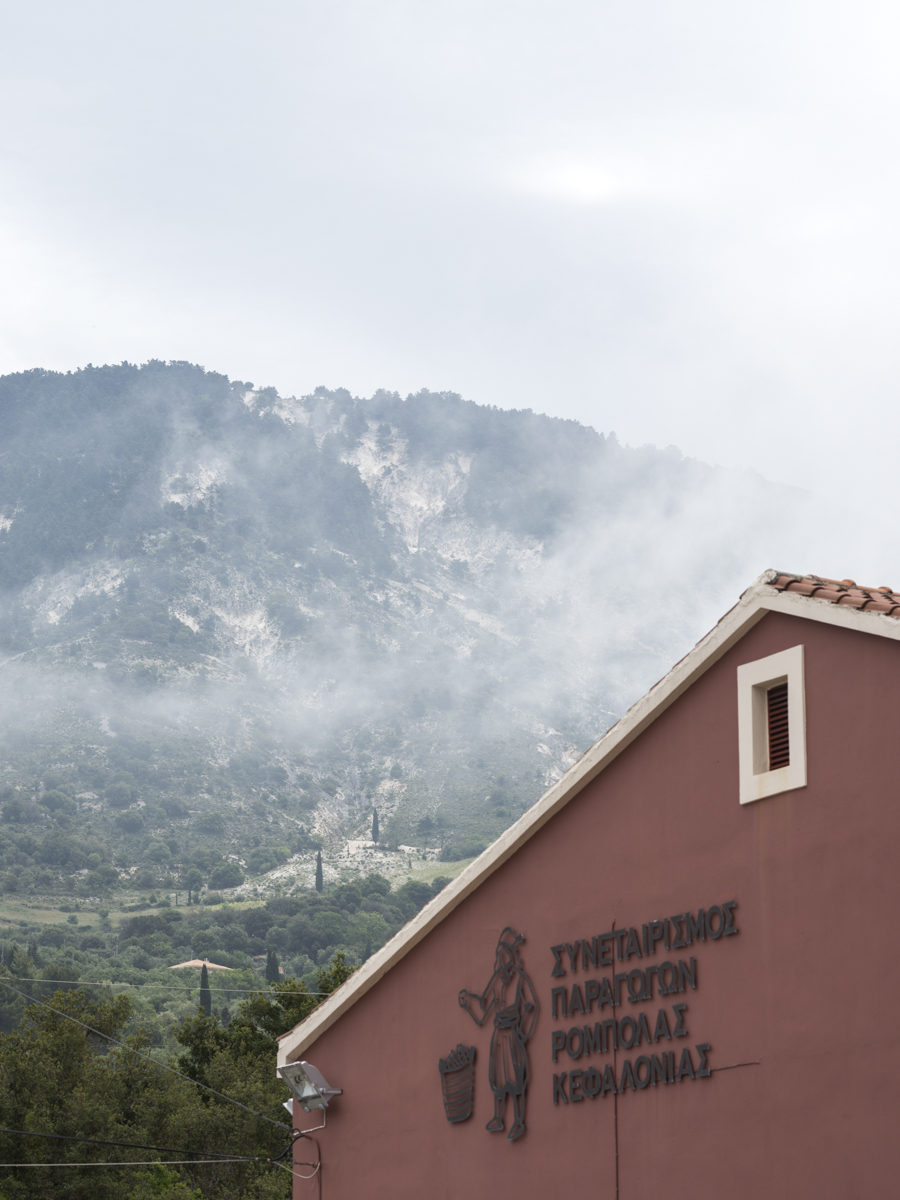
Located in the heart of the Robola Zone, the Cooperative of Cephalonia is the largest production unit on the island, with a total annual production of 500,000 bottles. It was established in 1982 with the participation of 60 grape growers. Vinification took place outdoors until 2006, when the new winery was built and new equipment was brought in. Today, the co-operative has 300 members, all growers in the Robola Zone (which covers the Valley of Omala). The vineyards begin at an altitude of 450 metres and reach 800 metres. The climate of the area is characterized by long rainfalls during the winter months − this phenomenon can extend into spring and early summer, sometimes disrupting maturation, and there are occasional heat waves. The greatest asset of the area is the wide diurnal range, with warm temperatures during the day and really cool nights. The wines produced are characterized by the natural acidity of the Robola grape and by minerality coming from the limestone and gravel soils. A small part of the production goes through barrel ageing; the majority is bottled fresh. The winery is open to visitors, and approximately 70,000 to 80,000 people come to the site each year to enjoy a short tour and wine-tasting sessions. A new area for wine tasting is currently being built and is expected to begin operating by the end of July. The company is also preparing a new brand, Orealios Gaea, under which it will market all its wines. The vinification process is supervised by the cooperative’s chief oenologist, Kostas Nodaras, while the cooperative’s general manager is Costas Bazikos, a chemist by training, who was kind enough to offer us the tour and organize the wine tasting.
The winery’s most popular selection is its Robola of Cephalonia with a characteristic bottle. This is a typically light easy-drinking expression of Robola and a bestseller with those who wish to take home with them a souvenir of the island. We also tried the barrel-aged version of the same wine, Robola of Cephalonia 2015, a wine with notes of vanilla and honey, with good acidity. Another Robola, San Gerasimo is much more aromatic, coming from the higher altitude vineyards, with good acidity, more fruit concentration and a longer aftertaste. This is a food-friendly wine, and a perfect match with seafood and with the local cuisine. The winery also produces Truth, a Robola from organically farmed vineyards, a wine with stronger notes of botanic aromas (chamomile) and Nouvelle Epoque, a wine produced from the lesser-known white variety Vostilidi, which had nearly become extinct before it was rediscovered and vinified, producing wines with a more tannic taste. This wine comes from newly planted vineyards. The winery’s other options include Linos White, a dry white blend of Moscato and the island’s lesser-known varieties of Ζakynthino and Tsaousi, and Linos Red, a dry red made from 100% Mavrodafni.
- Info: orealios.gr
- Omala, 28100
- T (+30) 26710 86301
MELISSINOS WINERY

Hidden away in the southern part of the island, Melissinos is the third winery open to visitors in the area of Argostoli. Today, a stone building that was once the summer house of the Solomos family − it was rebuilt after the 1953 earthquake that flattened the area − hosts this small winery, established in 2002. The winery is run by Kiki Siameli, a young oenologist responsible for the production of the winery’s 12 labels. Her approach to vinification is based on a philosophy of intervening as little as possible in the natural winemaking process, and a large portion of the grapes used are sourced from organically farmed vineyards.
The small yard at the back of the building, surrounded by olive trees, lemon trees and colourful rose bushes, provided the perfect spot for our wine tasting. Although it was early in the morning, we were more than willing to sample 10 of the winery’s 12 wines, all under the guidance of Kiki, who offered us details regarding the sourcing of the grapes and the vinification techniques used for each selection. We had the opportunity to compare three different versions of Robola: a Robola 2017, a typical Robola with high acidity and strong minerality, made from grapes sourced from two high-altitude vineyards (700m); a Bio Robola 2017, coming from the best Robola vineyards in the area of Fagias, which yielded a more aromatic version with less minerality; and Νatural 2017, a naturally fermented wine made according to a traditional winemaking process. We also tasted a Zakynthino Gold 2017, a dry white made from the indigenous variety Zakynthino, a grape which offers good natural acidity and which, thanks to its high phenolic character, has great ageing potential. The winery’s two red wines are made from Mavrodafni; the Mavro 2015, a blend from two different vineyards and the Mavrodafni 2015, a wine produced from grapes sourced from a pre-phylloxera vineyard, with strong botanic character and very good concentration of the fruit, both barrel-aged for a year (the latter has a longer ageing potential).
- Info: Thiramona, 28086
- T (+30) 26710 29716
SCLAVOS WINERY
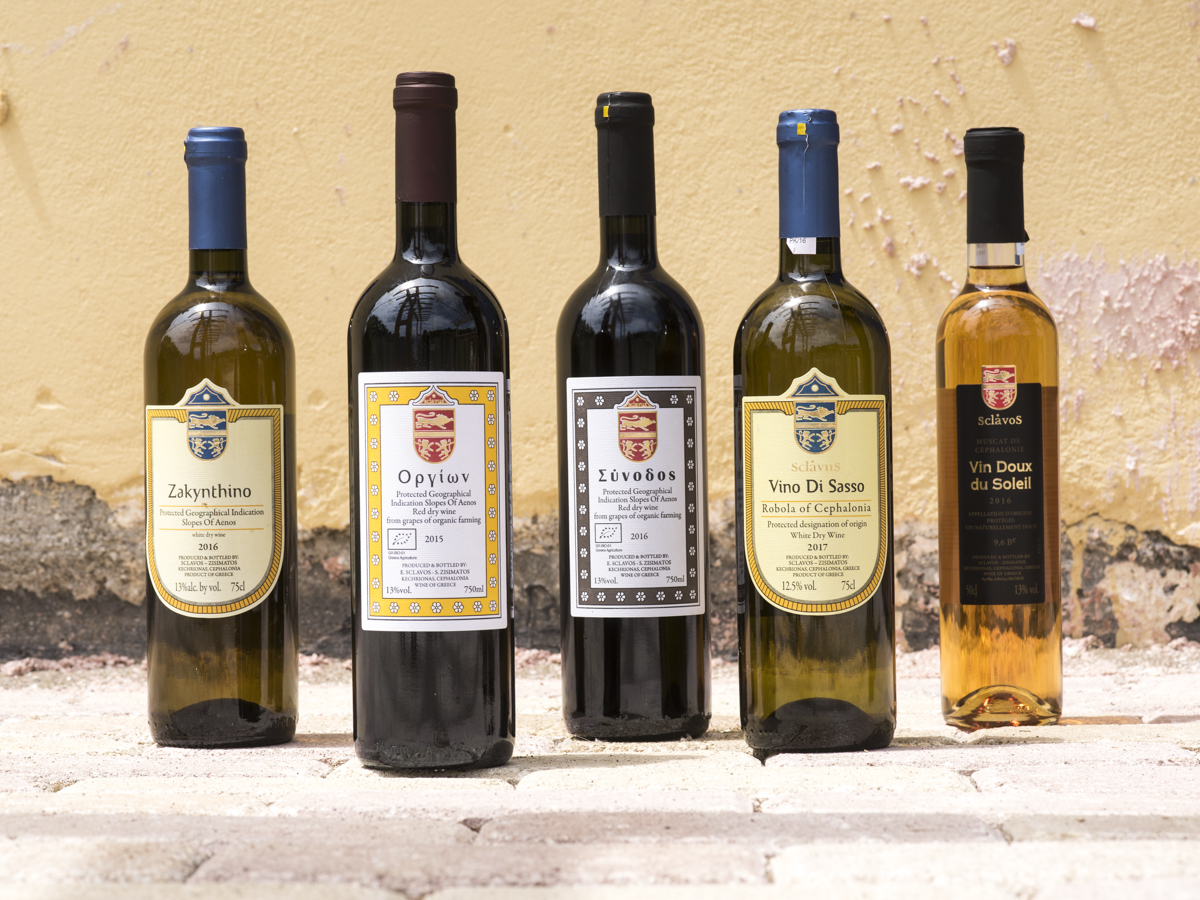
Arriving in Lixouri by sea, Sclavos Winery, located just a few kilometres from the port, was our first stop. Having already tasted some wines from here in a series of tastings in Athens, we were intrigued by the personality they projected and were very eager to meet the man behind the bottles. Evriviadis Sclavos has become something of a local legend. A soft-spoken man, dedicated to the biodynamic approach of vine-growing and winemaking, Sclavos doesn’t like to speak about himself but loves to talk about his vines. Being one of the most passionate producers of natural wines in Greece, he is dedicated to continuing the winemaking tradition of his family, but he’s also not shy about introducing new methods and carrying out whatever experimentation is required to enable him to produce high-quality wines. The family’s first vineyard in Cephalonia was planted in 1919, by Sclavos’ grandfather, who had left Odessa to return to the country, and the island, of his own grandfather’s birth. Ironically, that grandfather had emigrated to czarist Russia in the 1860s to establish a winery there. Today, the vineyard around the winery, a 6-hectare parcel of land, is itself surrounded by olive groves and cypress trees; it is a truly beautiful spot, imbuing its visitors with a sense of calm and serenity.
“All of the natural surroundings contribute to the evolution of the vines,” explained Sclavos, stressing the fact that there is absolutely no human intervention with the natural environment. The vines are natural bush vines trained via the ‘gobelet’ pruning method. The winery owns a total of 32 hectares, including a parcel of the original vineyard planted by Sclavos’ grandfather, which is cultivated following the practices of biodynamic farming. The average yield figures for all of the wines here rarely rise above 30 hl/ha, with some going as low as 16 hl/ha. The vines, which are not irrigated, benefit from the unique limestone terroir of the Robola Zone in eastern Cephalonia under the slopes of Mt. Ainos, and from the limestone, clay, and sandstone soils of the Paliki peninsula. The main variety cultivated here is Mavrodafni, a red variety which has been used in Greece, mainly in the area of Patras, to produce sweet wines. It was Sclavos who proved the immense potential of Mavrodafni, being the first producer in Greece to make a dry wine, one with a dense color and mature red fruit aromas, from this variety. Other indigenous varieties are cultivated as well, including Vostilidi, Ζakynthino and Tsaousi.
Inside the winery, the biodynamic calendar hanging on the wall indicates whether it is a good day for wine tasting or not. For us, it turned out that the day was perfect to taste the wines. The winery’s young oenologist Evaggelia Moraiti told us that the calendar provides vital information during the different winemaking processes that produce all their wines, a total of 10. She also pointed out that, because the winery believes in intervening as little as possible in the natural process of winemaking, they use sulfites only when it is absolutely necessary, employ only natural yeasts for the fermentation process, and do not filter the majority of their wines. The winery produces about 70,000 to 10,000 bottles per year, 50% of which are being exported to markets abroad, including the United States, Canada, Japan, France and the UK. “For us, the production of natural wines in not a marketing tool. It is a philosophy we truly believe in,” Sclavos told us. As we strolled among the fermentation tanks, we stopped to try two different versions of Robola, one from the higher altitude vineyards and one from ones lower down. The versatility of this variety, which Sclavos compares to Assyrtiko and even Riesling, was immediately evident.
As we proceeded to the wine-tasting area, Sclavos showed us a map of Cephalonia; pointing to the peninsula of Paliki, he told us that Odysseus, Homer’s home-sick hero, came from this part of Cephalonia instead of the present-day island of Ithaca. “This area used to be an island,” he said. “This is the orginal Ithaca.” It was a theory we would hear several times during our stay on the island. At the tasting, we tried a Zakynthino 2016, a dry white wine from the slopes of Ainos, vinified according to the principles of natural winemaking, unfiltered and without the use of sulfites; and a Vino di Sasso 2017, the winery’s Robola and one of the most interesting vinifications of Cephalonia’s most famous variety. This Robola is a deep and complex wine, with apricot aromas and some hints of petrol. We also sampled an Οrgion 2015, the winery’s signature wine, a red made from 100% from organically farmed Mavrodafni grapes; this was a wine with excellent fruit concentration and aromas of mature red fruit and some meaty notes as well. We ended with a Synodos 2016, the winery’s second red wine, an organic unfiltered wine resulting from the co-vinification of red Mavrodafni and the white grape Vostilidi (sourced from 40-year-old bush vines). A terroir-driven wine, this selection features black cherry and plum aromas.
- Info: Kechrionas, Lixouri 28200
- T (+30) 26710 91930 | (+30) 694 6000 748
- Visits by appointment
HARITATOS VINEYARD
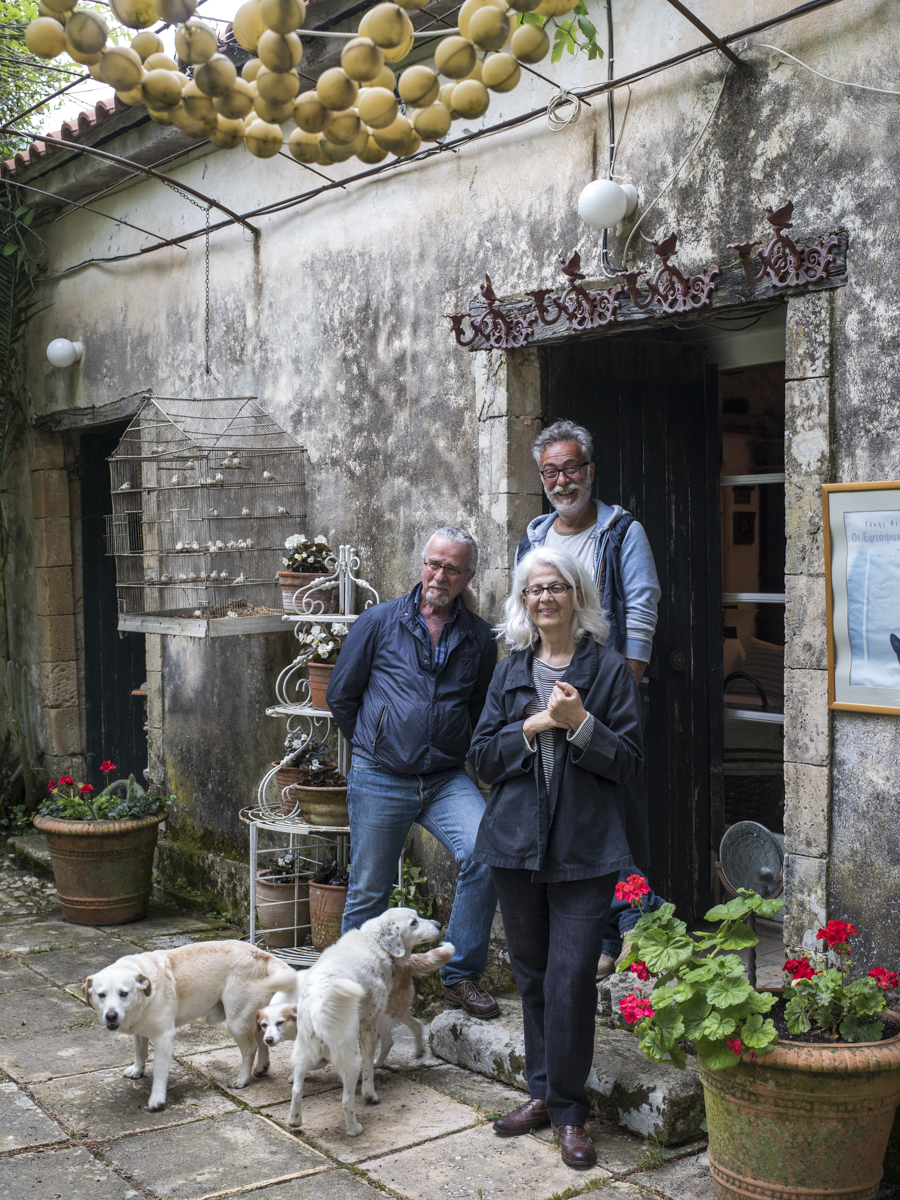
The road which was to lead us to our next destination was closed; a victim of the last big earthquake which rocked the island in 2014, it is still under repair. Instead, our helpful GPS took us down a series of picturesque back roads which eventually brought us to a small well-hidden paradise in the area of Monopolata. A white-haired man with a broad smile greeted us as we pulled up, introducing himself as Costas Haritatos. Moments later, he was joined by an elegant white haired lady; this was his sister, Ioanna Haritatou. When Haritos Haritatos, a pharmacist who went on to study oenology in order to help out the new family business, arrived as well, we were in the presence of the members of the Haritatos family who decided five years ago to turn the family-owned property into a wine-producing unit.
The family’s roots can be traced back to AD 1400, when the island was ruled by the Venetians. “The family property has never changed hands; it’s always been owned by our family,” explained Ioanna. The old farmhouse is an important part of the family’s long history. For 200 years it has stood here, despite earthquakes which have, unfortunately, not left it unscathed. A beautiful, well-tended garden surrounds the house, hosting all kinds of Mediterranean plants. The 120-acre holding is a fully-functioning farm, with the vineyard playing a central role. Olive groves, walnut trees, fig trees, mulberry trees, cherry trees and a small forest of cypresses cover much of the land. We saw chickens, ducks and geese, as well as a number of dogs, all moving about happily in typical farmyard fashion. It was easy to imagine all the happy moments the Haritatos family and their guests have shared in these marvellous surrounding.
“Five years ago, we decided to start producing our own wine from our grapes,” Ioanna said. “Until then, we’d been selling them to other wine producers in the area.” It was a decision that really changed their lives. They’ve had very different careers: Ioanna had served as a press attaché in Greek embassies around the world, spending many years living abroad; Costas had just returned from Rome, where he had spent the last 20 years; and Haritos, who lived on Cephalonia, had been a pharmacist. Today, they are dedicated to reviving this historic farm. The vineyards have been planted with two of the island’s three main indigenous varieties, Mavrodafni and Moscato and the family follows the principles of organic farming. A small amount of the lesser-known white variety of Vostilidi has been planted as well; it’s used to produce the winery’s newest addition Hariton, which was bottled for the first time this year. They work closely with oenologist Christos Peppas on the production of the winery’s four wines. This is a boutique winery, producing around 40,000 bottles annually. It is currently open to visitors by appointment; in the near future, the winery will also have a selling point for its wines and will host organized tours and wine tastings. Sitting in the estate’s lovely garden, we tasted all four wines: a Ktima Haritatou 2014, a red made from 100% Mavrodafni; a Mademoiselle Haritatou 2016, a fresh red also made from Mavrodafni; a Hariton 2017, 100% Vostilidi; and a Ktima Haritatou White 2017, an aromatic wine made from 100% Moscato.
- Info: haritatosvineyard.com
- Kladata, Lixouri 28200
- T (+30) 697 344 6352 | (+30) 697 6108 768
DOMAINE FOIVOS
Located in the area of Vouni near Lixouri, Foivos Winery is considered to be the continuation of the Matzavinos Winery, one of the two historic wineries of Cephalonia. In 1999, a new effort began, aiming at developing indigenous varieties of Cephalonia according to the principles of natural winemaking, with the least possible human intervention. The winery produces 25 different wines, both varietals and blends from the island’s indigenous varieties. The grapes are sourced from organically farmed, privately owned vineyards and from other growers working in cooperation with the winery. The winery is open to visitors. Unfortunately, we didn’t have the chance to visit the winery or taste any of its wines.
- Info: domainefoivos.com
- Vouni, Lixouri 28200
- T (+30) 26710 2950
g


